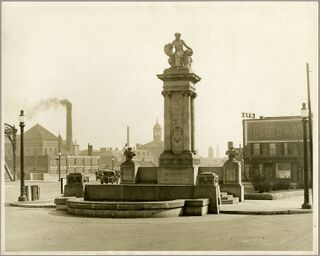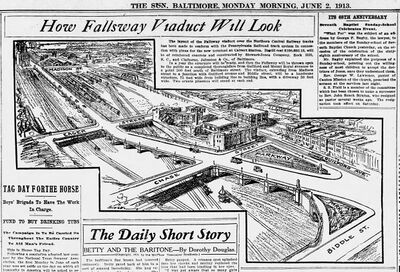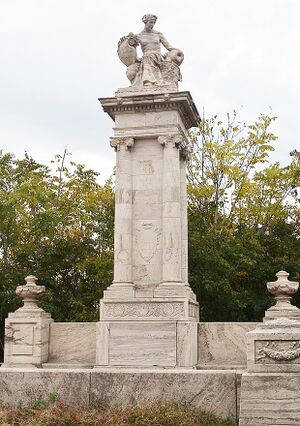Difference between revisions of "Fallsway Viaduct & Fountain"
From DAS Wiki
| Line 2: | Line 2: | ||
|image=Pietsch - Fallsway Fountain.jpg | |image=Pietsch - Fallsway Fountain.jpg | ||
|address=1168 Guilford Ave | |address=1168 Guilford Ave | ||
| + | |perimeter=polygons=39.3035103577145,-76.61187558657342:39.303573660347375,-76.61188229209596:39.30357677359012,-76.61180987245255:39.303517621953944,-76.61179243809396:39.30350828221736,-76.61183267122918 | ||
|Geo=39.30331, -76.61179 | |Geo=39.30331, -76.61179 | ||
|founded_approx=No | |founded_approx=No | ||
Latest revision as of 13:53, August 30, 2022
| Fallsway Viaduct & Fountain | |
|---|---|

| |
| Site Information | |
| Address | 1168 Guilford Ave |
| Type of facility | Bridge |
| People | |
| Landscape Architect | Theodore Wells Pietsch |
| Dates | |
| Opened to Public | 1916 |
There was a precursor to the Jones Falls Expressway (I-83), and that was the Fallsway Viaduct, designed by Theodore Wells Pietsch in 1912. When the Fallsway Viaduct was finished in 1916, it replaced 12 older bridges, spanning from Mount Royal Avenue to Baltimore Street. It covered Jones Falls, which had become an open sewer that was prone to flooding. The viaduct was an enormous engineering feat. Today, the Fallsway Fountain (the statue of which was done by Hans Schuler) can be seen at the offramp near Biddle Street and Guilford Avenue.
Renderings of the viaduct were published in the Baltimore Sun on June 2, 1913.
The fountain can still be seen today.

